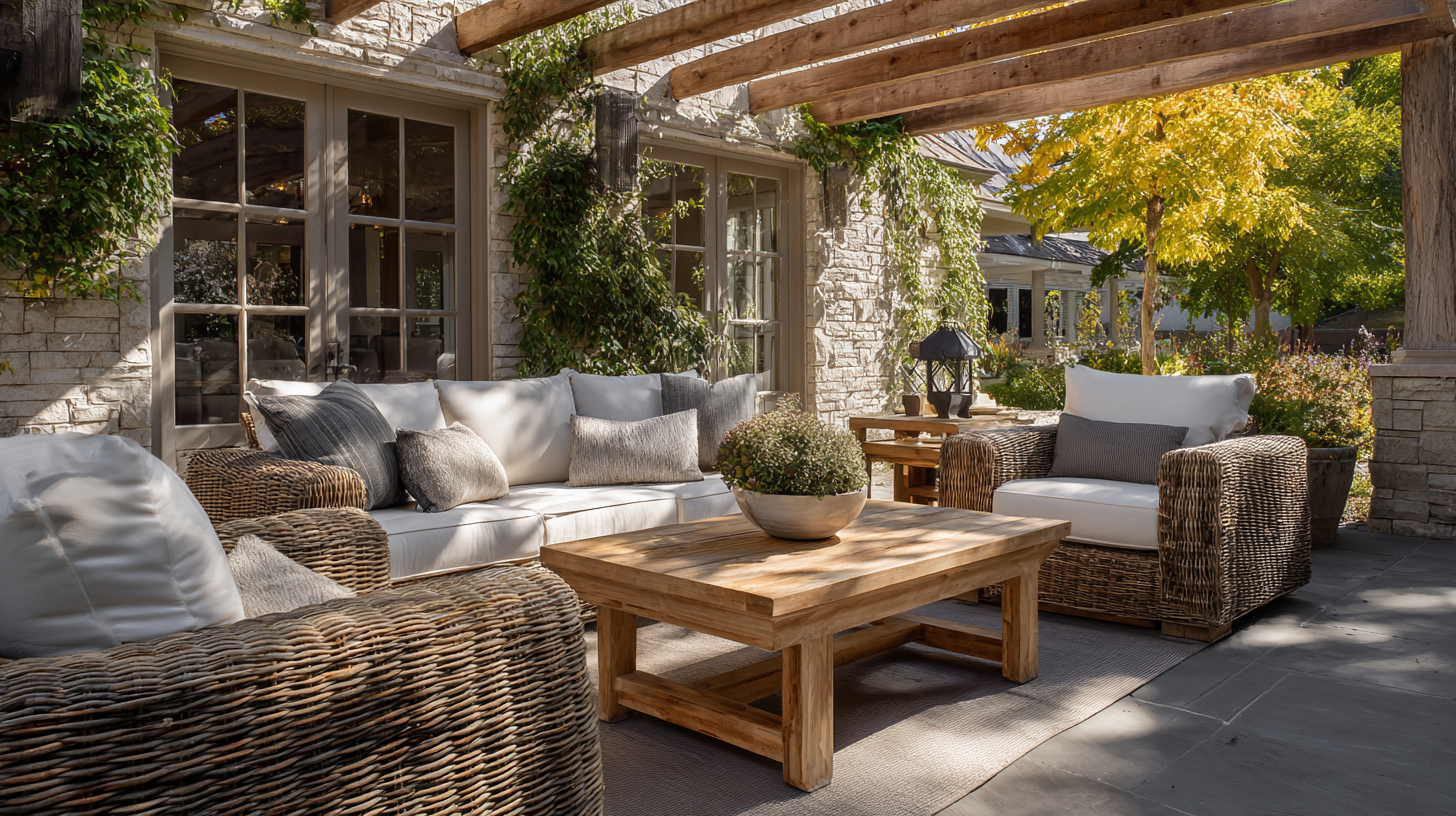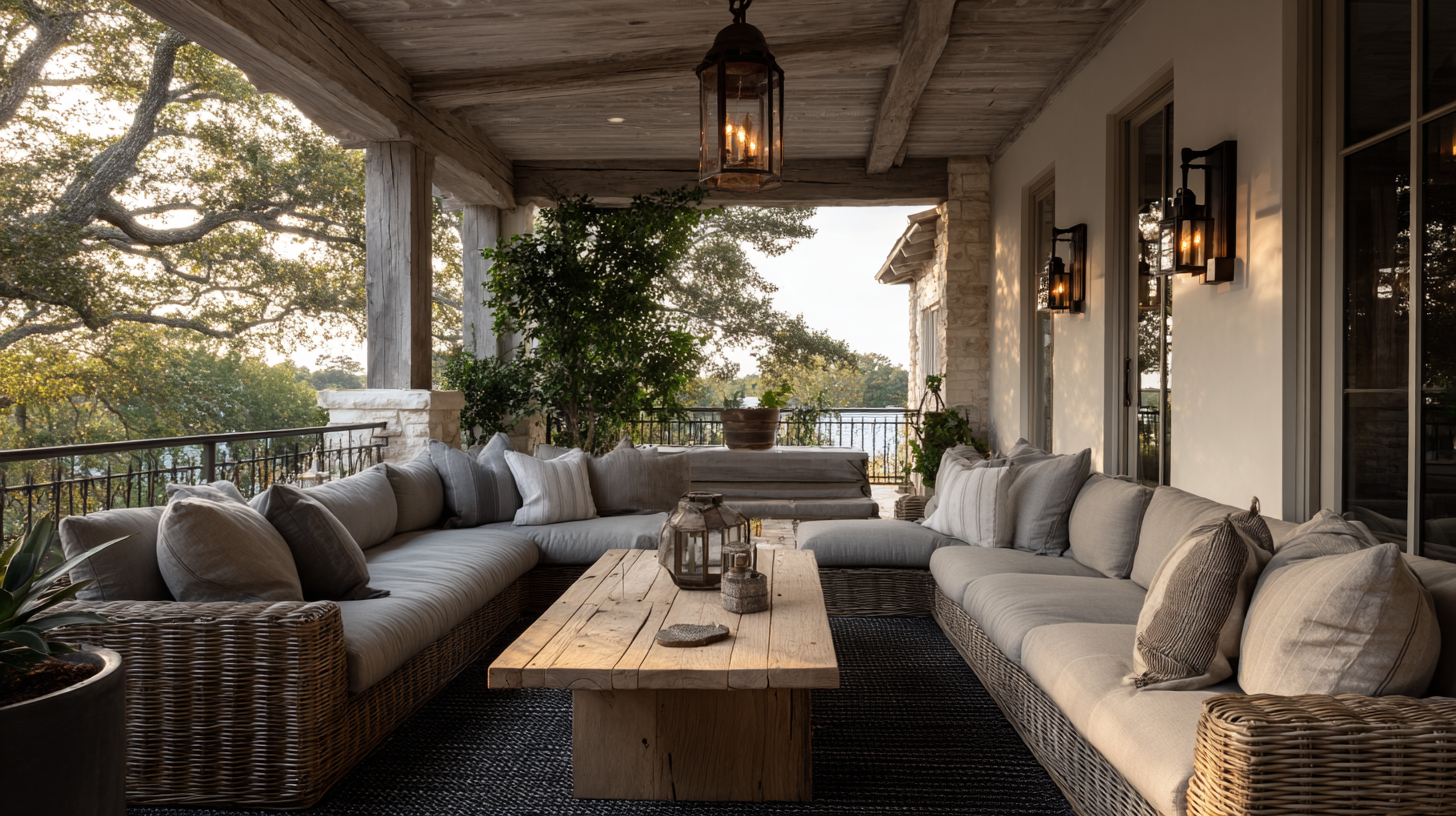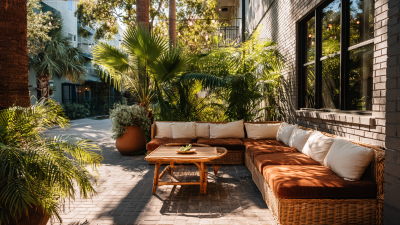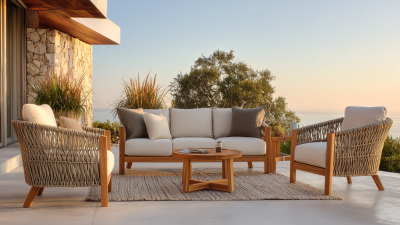The Ultimate Guide to Choosing the Best Outdoor Seating for Your Space
When it comes to enhancing your outdoor space, selecting the right outdoor seating is pivotal. According to a recent industry report by the National Association of Home Builders, nearly 75% of homeowners prioritize outdoor living areas as essential components of their property, with outdoor seating being a critical aspect of these spaces. Effective outdoor seating not only enhances aesthetic appeal but also significantly increases the functionality of your outdoor environments, making them more versatile for entertainment and relaxation. As more homeowners invest in creating inviting outdoor retreats, understanding the various materials, styles, and layouts of outdoor seating becomes indispensable. Whether you’re looking to create a cozy nook for morning coffees or a grand dining area for evening gatherings, this guide will provide you with essential tips and insights to choose the best outdoor seating tailored to your needs.

Understanding Your Outdoor Space: Measurements and Layout Considerations
When selecting outdoor seating, the first step is to thoroughly assess your outdoor space. Accurate measurements are essential. According to the International Casual Furnishings Association, ergonomic dimensions should be prioritized, as they can greatly influence comfort levels. A well-designed seating arrangement typically requires at least 36 inches of walkway space for movement, while seating depth often ranges from 18 to 24 inches for optimal comfort. Ensuring proper spacing not only promotes accessibility but also enhances the overall flow of your outdoor area.
Layout considerations play a crucial role as well. Research indicates that gathering areas with a circular format encourage interaction, making them ideal for social gatherings. A report from the American Society of Landscape Architects emphasizes the importance of balancing hardscape and softscape elements, advising at least 30% of your outdoor space to remain unpaved for aesthetic and ecological benefits. When planning your layout, consider the orientation of your space—shaded areas can foster comfort during the summer months, allowing for extended usage of outdoor seating. By carefully measuring and planning your layout, you can create an inviting and functional outdoor environment.
Evaluating Different Materials: Wood, Metal, and Resin for Outdoor Seating
When it comes to choosing the best outdoor seating for your space, evaluating the materials is crucial. Wood, metal, and resin each offer unique benefits and aesthetics that can greatly influence your outdoor experience. Wood provides a classic, warm appeal and blends seamlessly with nature, making it an excellent choice for traditional settings. However, it requires regular maintenance to prevent weathering and decay, so it's essential to choose durable options, like teak or cedar, for longevity.
On the other hand, metal seating, particularly aluminum or wrought iron, imparts a sleek and contemporary look. Metal chairs are often lighter and more portable, making them suitable for versatile arrangements. However, they can become hot in the sun or cold in chilly weather, so considering cushion options is advisable for comfort. Lastly, resin furniture has gained popularity due to its exceptional durability and low maintenance. Resistant to fading, cracking, and rusting, resin is ideal for those who want stylish seating without the fuss. It also comes in a variety of colors and styles, allowing for great customization in your outdoor decor.
The Ultimate Guide to Choosing the Best Outdoor Seating: Material Comparison
Choosing the Right Style: Matching Seating with Your Landscape Design
When selecting outdoor seating, it's essential to consider how the style of your furniture harmonizes with your overall landscape design. A modern home with clean lines might look best with minimalist seating options, such as sleek metal chairs or geometric benches. Conversely, a rustic garden would benefit from the warmth of wooden furniture, which can enhance natural aesthetics and provide a cozy atmosphere. Always think about colors and materials that complement existing elements in your garden, such as pathways, plants, and architectural features.
Additionally, the scale of your furniture plays a crucial role in maintaining a balanced look. Oversized furniture can overwhelm a small, intimate garden, while too-small pieces can feel lost in expansive outdoor spaces. To create a cohesive environment, consider the furniture arrangement as part of the overall landscape. Incorporating varying heights through layered seating options, like low benches paired with tall chairs, can add visual interest without disrupting the flow of your outdoor area. This thoughtful coordination between furniture and landscape helps create a welcoming outdoor oasis that invites relaxation and enjoyment.
The Ultimate Guide to Choosing the Best Outdoor Seating for Your Space
| Seating Type | Material | Style | Weather Resistance | Comfort Level |
|---|---|---|---|---|
| Adirondack Chair | Wood | Traditional | High | High |
| Bench | Metal | Modern | Medium | Medium |
| Lounge Chair | Plastic | Contemporary | High | High |
| Swing | Wood | Rustic | Medium | Medium |
| Dining Set | Aluminum | Classic | High | High |
Comfort and Functionality: Essential Features to Look for in Outdoor Seating
When selecting outdoor seating for your space, comfort and functionality are paramount. Industry reports indicate that the outdoor chairs market is experiencing significant growth, driven by an increasing preference for high-quality, durable materials like wood, metal, and weather-resistant plastics. As of 2023, the market size for outdoor seating is projected to reach approximately $4 billion, with a notable shift towards sustainable and eco-friendly materials that not only enhance aesthetic appeal but also withstand various weather conditions.
Incorporating essential features such as ergonomic design, adjustable components, and stackability can greatly enhance the functionality of outdoor chairs. Statistics show that around 40% of consumers prioritize comfort features, such as cushioned seating and back support, while functionality, including lightweight portability and easy maintenance, are increasingly influential in purchase decisions. As homeowners invest in outdoor spaces for relaxation and entertaining, understanding these preferences becomes crucial for choosing the best outdoor seating that meets both comfort and functionality needs.

Maintaining Your Outdoor Furniture: Tips for Longevity and Care
Maintaining outdoor furniture is essential for ensuring it lasts through various weather conditions and continues to look appealing over time. One of the key tips for longevity is to choose the right materials. Opt for weather-resistant options such as teak, aluminum, or synthetic wicker that can withstand moisture and UV exposure. Regularly applying protective coatings can further enhance the durability of your furniture, especially for wood pieces that may be prone to cracking or fading.
In addition to selecting the right materials, proper cleaning is vital. Use a soft brush and mild soap solution to remove dirt and debris, and avoid abrasive tools that could damage surfaces. For fabrics, consider using specific cleaners that are designed for outdoor upholstery to prevent fading and prolong their life. Additionally, storing your furniture during the off-season or using protective covers can drastically reduce wear and tear. By following these maintenance tips, you can enjoy your outdoor seating for years to come, keeping it looking fresh and inviting.

Related Posts
-

Exploring Lawn Furniture Trends at the 138th Canton Fair in China 2025
-

How to Choose the Right Outdoor Seating for Your Space: Insights and Trends for 2023
-

Top Strategies for Elevating Your Outdoor Seating Experience
-

7 Best Features of High End Outdoor Furniture You Need to Know for 2023
-

10 Surprising Facts About Outdoor Furniture Market Growth in 2023
-

The Ultimate Checklist for Choosing the Best Commercial Patio Furniture for Your Business Success
INFORMATION CENTER
RESOURCES & MORE
INSPIRATION FOR YOU
© Copyright 1981 - 2025 | California Patio™ All Rights Reserved
© Copyright 1981 - 2025 | California Patio™ All Rights Reserved


